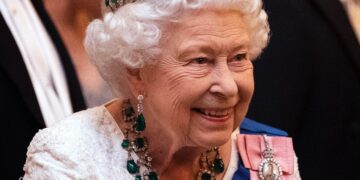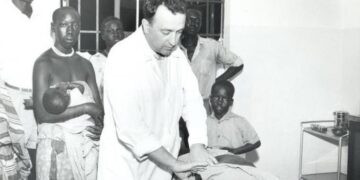The Comboni Missionaries of the Heart of Jesus is an international Catholic institute of priests, brothers and lay people doing missionary work in African, Latin America and Asian countries. Following the charism of our founder, Saint Daniel Comboni (1831-1881) , first bishop of Khartoum (Sudan) we work for the evangelisation and human promotion of “the poorest and most abandoned”. The Comboni Missionary Sisters and the Secular Comboni Institute (female) are also part of the Comboni family in the world.
Daniel Comboni’s plan was summed up in his motto “Save African with Africa”. Ever since, training African leaders (clergy, catechists, intellectual cadres, technicians, teachers, health personnel, etcetera) and working together with them has became the trademark of the Comboni Missionaries.
The first Comboni Missionaries entered Uganda from the north and settled in Omach in 1910. Because of the affinity between the people of South Sudan and Northern Uganda, this move was seen as the natural extension of the work the missionaries were already doing in Sudan. Monsignor Geyer, Vicar Apostolic of Khartoum, led the first expedition personally.
Soon, however, the missionaries had to abandon Omach, on the Eastern bank of the Victoria Nile, because of sleeping sickness. The mission post was moved to Gulu. New mission stations were opened from there during the following years: in Madi (1917), Lango (1930) and Karamoja (1933). In 1923 Gulu was erected as a separate Apostolic Prefecture under Fr. Antonio Vignato. In 1938 Bishop Angelo Negri, Bignator’s successor, ordained the first two priests of the growing Vicariate.
From the very beginninf, education was one of the primary concerns of the Comboni Missionaries. Brothers were mostly engaged in farm and trade schools, while the Comboni Sisters gave their contribution in establishing and running girls’ schools and convents for indigenous vocations. The development of these schools reached its peak during the fifties and early sixties.
The Comboni Missionaries also founded some of the Uganda’s finest hospitals, like Lachor (in Gulu), St. Joseph’s Kitgum and Kalongo. Lachor and Kalongo have nursing and midwifery schools attached. They are still offering quality medical care to a population that has been seriously tried by two decades of war in Acholiland.
With the approach of independence, the Comboni Missionaries played a leading role in enlightening the people on the Christian teaching on social and political affairs. This was done mostly through the activities of the Catholic Action, the foundation of Leadership magazine and the Gulu Catholic Press.
Following the nationalisation of the schools in 1964 the Comboni Missionaries, now free of many of the responsibilities of teaching and school administration, were able to plunge more deeply into pastoral work. Both during the time of Obote (1960s) and of Idi Amin (1970s) a number of Comboni Missionaries were expelled from Uganda.
Also, as a direct result of the will to remain and suffer with the people, four missionaries were killed during the war in 1979. By 2004, the number of Comboni Missionaries who met a violent death in Uganda had risen to 14. This number includes also two Italian priests who died in a pit to save a boy, in Kigumba, in 1972, and Frs. Egidio Ferracin, Egidio Biscaro and Raffaele Di Bari, killed during the years of insurgency in the North. The latest (and hopefully the last) was Fr. Fulvi, who was stabbed to death in his room in Gulu in 2004.
The Comboni Missionaries still work mainly in the northern dioceses of Arua, Nebbi, Gulu, Lira, Kotido and Moroto, although they are also present in the South. We work as helpers of the local Church, which is becoming self-sufficient. Languages and living conditions vary greatly from area to area:
There are also 40 Ugandan Comboni Missionaries, most of whom do missionary work in other countries like Kenya, Egypt, Malawi, Zambia, Central African Republic, Nicaragua and Brazil.
















